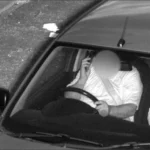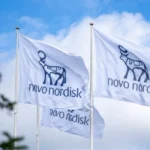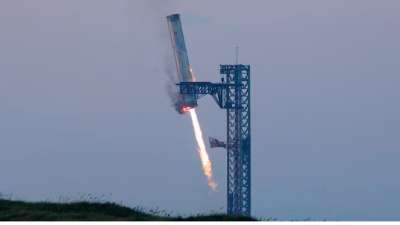That’s history for SpaceX in its Starship test flight because the rocket’s lower half was successfully caught during a return from space, a feat that only pioneers in the space industry can dream of in achieving their ultimate goal of building a fully reusable and rapidly deployable rocket system.
For the first time, a Super Heavy booster backed into the Boca Chica, Texas, launch pad and was snatched by a pair of giant mechanical arms under an ambitious fifth test flight at SpaceX. Engineers at SpaceX hailed the event as “a day for history books” as they marked the capture of half of the rocket.
Escalating SpaceX’s Reusability Goals
This test flight is an essential accomplishment in SpaceX’s long-term mission to develop rocket technology for reusability, thereby reducing costs associated with travelling into space and making redeployment feasible and quick for any spacecraft. The successful booster catching shows that SpaceX has made tremendous progress towards these ends.
Before liftoff, expectations were in check. SpaceX had admitted that getting the booster to latch on the first attempt was unlikely. They even planned for the chance of sending the booster to land in the Gulf of Mexico just in case. But a precise landing of the booster was an excellent win for the team.
Critical Test Flight Highlights
The test flight started pretty much like all previous launches; the Starship separated from its booster at the 2-minute and 45-second mark. The booster turned back toward the launch site as tension built about whether the complex manoeuvre would succeed. The team did final checks, and once all clear was declared, SpaceX’s mission control erupted in cheers.
But the booster slowed its descent as it fell back to Earth at thousands of miles an hour. Its raptor engines cushioned the crash and sent it floating near the 146-meter-high (480 ft) launch tower. At this point, it appeared just to glide along, its final speed before being snatched up gently by mechanical arms. The gentle catch will eliminate the need for complicated landing gear on the rocket, allowing for quicker redeployment in the future.
The rocket’s upper stage, which will carry people and cargo on missions in the future, will separate from the booster, ignite engines for a series of brief engine firings, and land in the Indian Ocean 40 minutes later. SpaceX CEO Elon Musk hailed the event on the microblogging platform X (formerly Twitter) with the message: “Ship landed precisely on target! Second of the two objectives achieved.”
Looking toward the Future
This successful test flight is part of a broader mission for SpaceX to make space travel more efficient and cost-effective. The firm sees using Starship to carry humans to the Moon and eventually Mars as one of its goals. NASA, which has contracted with SpaceX to develop a lunar lander for its Artemis missions, will be heartened by this progress. NASA has paid SpaceX $2.8 billion to advance the Starship system toward returning astronauts to the Moon by 2026.
However, despite all this success, SpaceX faces regulatory problems. The Federal Aviation Administration (FAA) had put subsequent launches on hold pending an audit of the company’s permits. FAA also fined SpaceX $633,000 for allegedly not adhering to the conditions of its license. This led to public arguments between the FAA and Musk.
These developments should eventually support SpaceX toward making humanity a multi-planetary species while navigating its regulatory landscape and environmental considerations related to rocket emissions.
For more reporting like this, please follow Newsdecensored on your favorite social media sites and bookmark the website. Thank you for your interest and support.















